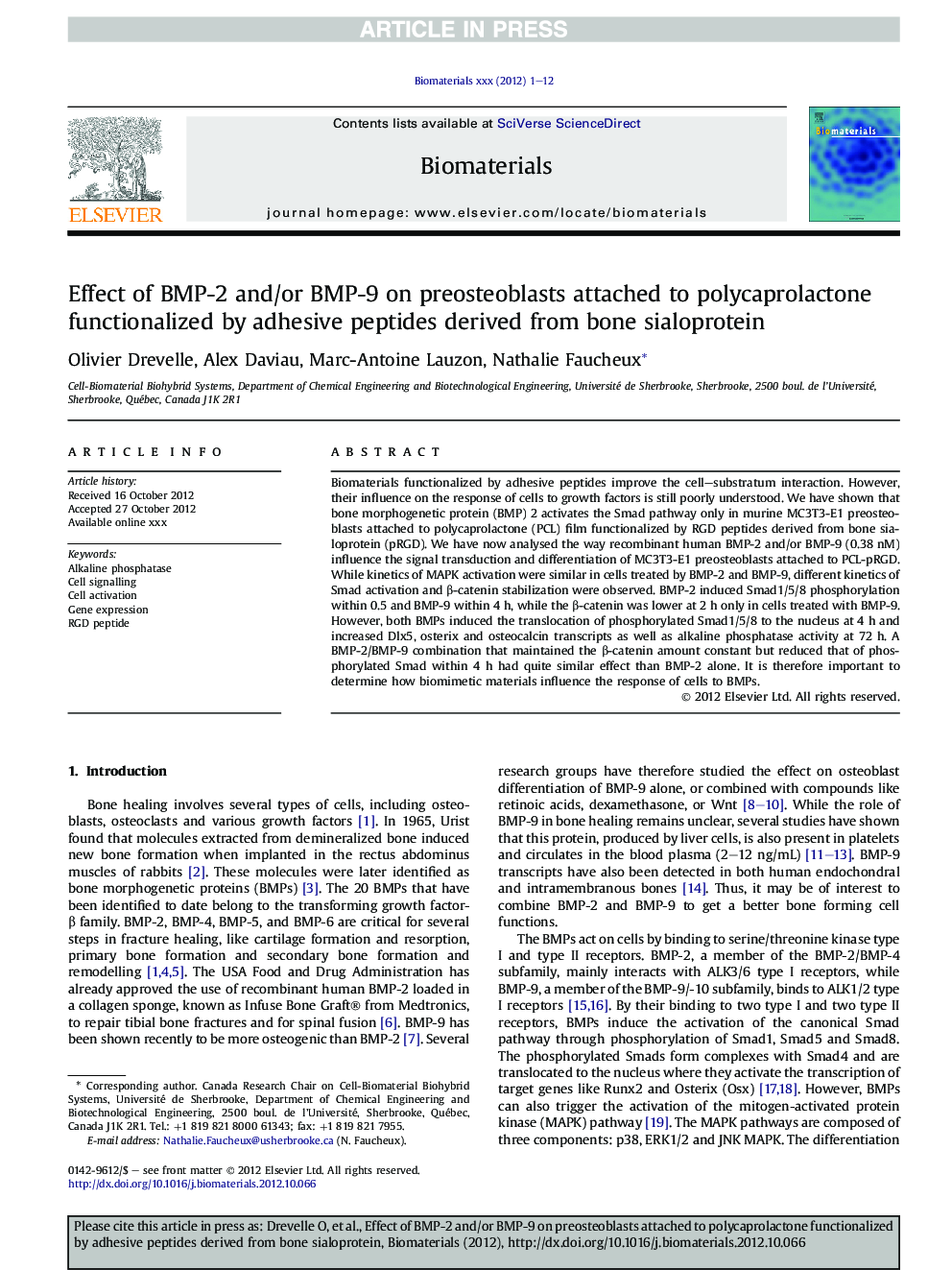| Article ID | Journal | Published Year | Pages | File Type |
|---|---|---|---|---|
| 10229295 | Biomaterials | 2013 | 12 Pages |
Abstract
Biomaterials functionalized by adhesive peptides improve the cell-substratum interaction. However, their influence on the response of cells to growth factors is still poorly understood. We have shown that bone morphogenetic protein (BMP) 2 activates the Smad pathway only in murine MC3T3-E1 preosteoblasts attached to polycaprolactone (PCL) film functionalized by RGD peptides derived from bone sialoprotein (pRGD). We have now analysed the way recombinant human BMP-2 and/or BMP-9 (0.38 nM) influence the signal transduction and differentiation of MC3T3-E1 preosteoblasts attached to PCL-pRGD. While kinetics of MAPK activation were similar in cells treated by BMP-2 and BMP-9, different kinetics of Smad activation and β-catenin stabilization were observed. BMP-2 induced Smad1/5/8 phosphorylation within 0.5 and BMP-9 within 4 h, while the β-catenin was lower at 2 h only in cells treated with BMP-9. However, both BMPs induced the translocation of phosphorylated Smad1/5/8 to the nucleus at 4 h and increased Dlx5, osterix and osteocalcin transcripts as well as alkaline phosphatase activity at 72 h. A BMP-2/BMP-9 combination that maintained the β-catenin amount constant but reduced that of phosphorylated Smad within 4 h had quite similar effect than BMP-2 alone. It is therefore important to determine how biomimetic materials influence the response of cells to BMPs.
Related Topics
Physical Sciences and Engineering
Chemical Engineering
Bioengineering
Authors
Olivier Drevelle, Alex Daviau, Marc-Antoine Lauzon, Nathalie Faucheux,
